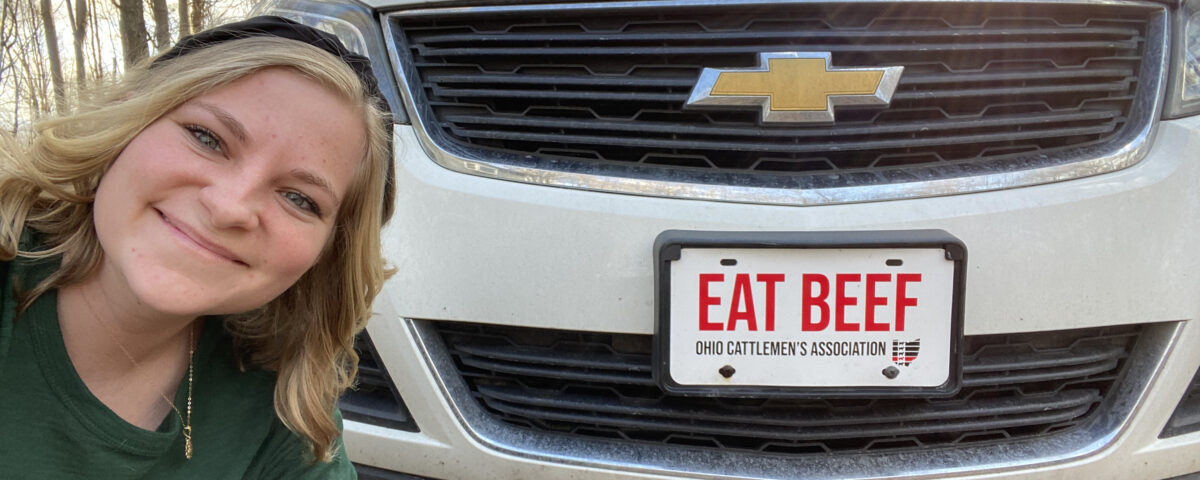
What’s the BEEF All About?
Fear-Based Marketing Undermines Consumer Confidence
By Carley Roberts
In the last couple weeks, my Facebook feed has been sprinkled with information comparing ground beef purchased at a grocery store with that from a local farm. The premise of the post was to promote the notion that “local” ground beef is a safer, more nutritious option. As tempting as it is to agree with that, the opposite is actually true!
Carley, why do you care so much?
I remember the first time I had to purchase ground beef at the grocery store. It’s kind of a weird thing to remember. I was a junior in college, and I had run out of the ground beef in my freezer — which I had stocked from my family’s farm.
Heck, I didn’t know the difference between 80/20 or 70/30 ground beef until I called my mom that day at 20 years old! (That’s a bit embarrassing to admit as a beef farmer, but it is true, nonetheless!)
Growing up on a farm, my family raised beef cattle and row crops, and the majority of our animal protein was raised on our own farm or on a farm a couple miles down the road. We didn’t go to the store to buy a lot of animal protein, aside from chicken.
Since moving away from the family farm, I’m now accustomed to purchasing my ground beef from Kroger, Meijer and the local IGA, because that is what is available to me!
That Facebook post struck a chord with me, because I still remember that first ground beef grocery run. Another thing I remember is that I wasn’t worried about the quality of the product I was buying at the store. I knew that farm families, like my own, raised that beef being sold at the meat counter. I knew that the food I was purchasing was handled in a way that ensures the safety and quality of the food wasn’t compromised.
What’s the problem?
The initial Facebook post sounded alarms about “grocery store beef;” they used fear-based marketing to promote their beef. They made false claims that damaged the integrity of the entire beef industry and undermined consumer confidence in the food supply.
Most consumers are in a socio-economic position that they must purchase their food at a grocery chain or market and may not have a local farm from which to buy direct. That doesn’t mean the food they have access to is in any way unsafe.
When it comes to ground beef, the United States Department of Agriculture (USDA) has set strict guidelines that ensure the safety and quality of ground beef is maintained. The following is true of the ground beef you’re buying at the store:
- It has been federally inspected by the USDA’s Food Safety and Inspection Service (FSIS) and ensures that the meat products are, “wholesome, unadulterated, and correctly labeled and packaged.”
- If exported to the U.S. from USDA-approved countries, it must adhere to all safety standards applied to beef products within the United States. The country must also, at minimum, use the equivalent sanitary measures required within the U.S. that protect against food hazards.
If you have access to locally-raised beef, that is a wonderful choice! If you don’t have access, we’re fortunate to have grocery stores with coolers full of beef products to nourish your family.
Just Eat Beef
As a cattle farmer, it was disheartening to see a fellow farmer point fingers at another segment of our own industry. As a consumer, I recognize how hard it can be to sift through the information that exists when it comes to our food choices.
Would I rather raise my own beef instead of buying it at the store? Yes. But, it isn’t because I am afraid of how the beef at a grocery store is produced. It’s because I miss the connection I had to my food. I miss the opportunity it gave me to show others how their food is produced (whether it comes from a feedlot or a family farm with 12 head of cattle). I miss being able to instill confidence in consumers, knowing that the products they are eating are nutritious and safe.
I hope you will do as my license plate says, and “Eat Beef” with confidence and peace of mind, whether you bought it at the grocery store or from a local farmer.
